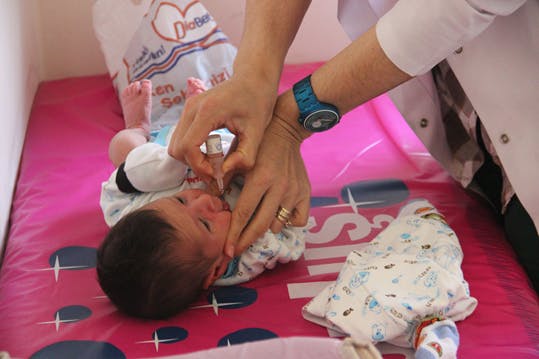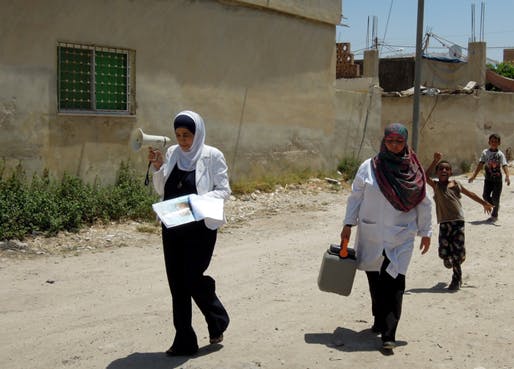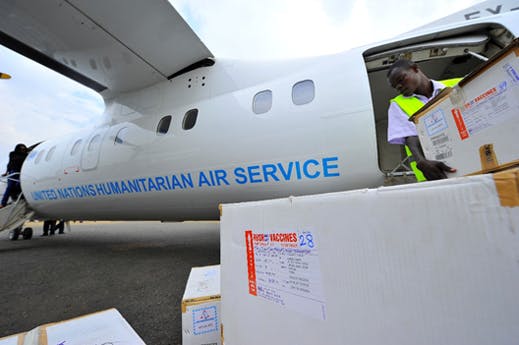Children who have fled their homes to escape conflict or disaster sadly still face threats: infectious diseases like measles and polio. In these settings, health systems are often strained and crowded shelters can make children vulnerable to diseases.
That is why United Nations agencies including the World Health Organization (WHO), the UN Children’s Fund (UNICEF), and the UN Refugee Agency (UNHCR), along with local and global partners, mobilize to help provide life-saving immunizations to refugee children, as well as to at-risk children in countries that host refugees.
Here is a snapshot of some of their work:
A child in Turkey receives the polio vaccine as part of the country’s effort to vaccinate at-risk children, including Syrian refugees. Photo credit: UNICEF/Turkey 2014/Yurtsever.
This month, hundreds of vaccination teams in Jordan traveled to remote locations to vaccinate children against polio. According to UNICEF, this is part of a coordinated campaign by countries in the region to respond to the outbreak of polio in Syria. Photo credit: UNICEF/Jordan-2014/Fricker.
Earlier this year, precious cargo was offloaded at the Kakuma airstrip in Kenya: Vaccines for the Kakuma refugee camp. UN agencies and partners have been working to protect refugees from measles imported from South Sudan, where fighting has forced nearly 1 million people to flee. Learn more about the effort to end measles here: http://bit.ly/1kyA6iJ. Photo credit: Alex Kamweru/UN Foundation
Take Action: Join the UN Foundation’s Shot@Life campaign. Shot@Life works with the UN and partner agencies to deliver life-saving vaccines to children around the globe. This often includes serving the vast refugee populations who need access to vaccines to prevent deadly diseases like measles and pneumonia, as well as protect against the devastating effects of polio.



 View All Blog Posts
View All Blog Posts

